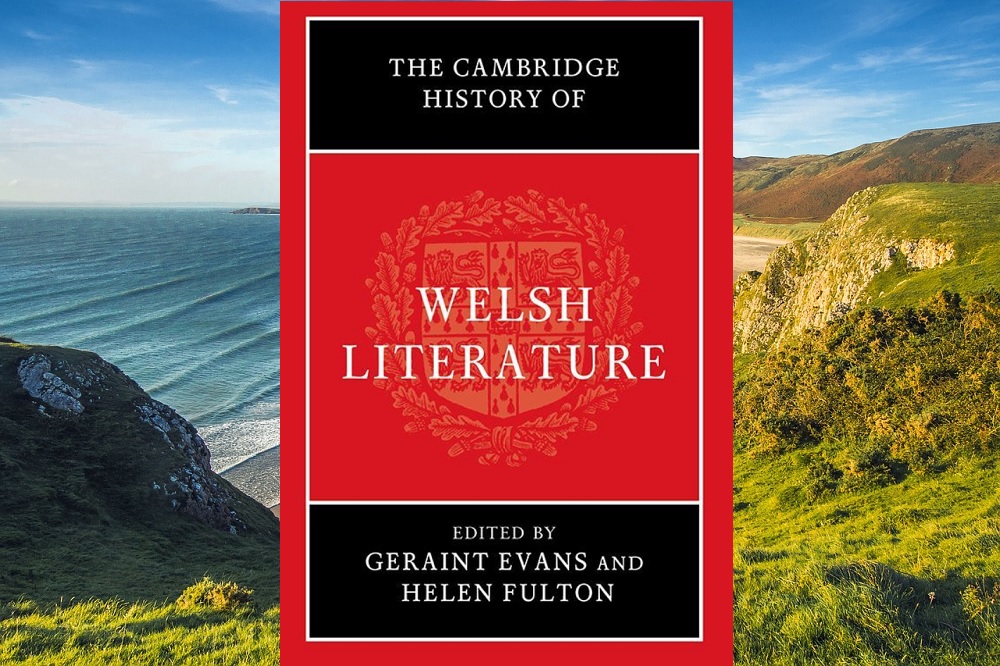Review: The Cambridge History of Welsh Literature

Jon Gower
To judge this book by its cover, and with the imprimatur of its title, you might not expect it to be an easy read. Yet it is a testament to the clarity of the writing by the 35 contributors that you can read it much as one would a novel, one which tells the story of two streams of literature which flow inexorably into each other. In that sense it is an account of the relationship between two languages in one country, and how they manifest themselves in literature.
It is also a supremely important addition to the Welsh library shelf, a work of deep scholarship coupled with clear explanation and the two editors deserve a nation’s plaudits for their endeavours. They set out to consider “the two literatures side by side, as part of a singular history” arguing that “bilingualism, always present in Wales, is becoming widely recognized as its normative condition.”
It thus ranges from the vitality of medieval Welsh literature – which still resonates down the ages to influence writers today – through the effects of the Acts of Union on Welsh poets and scribes, when the end of a traditional bardic culture overlapped with the advent of printing, to charting the twin peaks of translating the New Testament and Bible into Welsh. It consistently looks at the relationship between politics and writing, and the way in which the latter is often shored up, or not, by the economy and the economics of production for an often small market.
‘The Cambridge History…’ begins at the very beginning, with The Black Book of Carmarthen, Llyfr Aneirin, Llyfr Taliesin and the martial music of Y Gododdin, a series of elegies which follows a war band on a fatal journey to Catraeth, where Catterick stands today, in the Old North. It is seemingly an eye-witness account of a massacre, where the last man standing might have been a poet whose name is Aneirin. And his account, a hard-edged song forged in the battlefields of post-Roman Britain, lays down the rhythmic notes of a bardic tradition which lives on to this day, not least in the unique poetic forms of cynghanedd.
Whether Y Gododdin is a sixth-century news piece or a thirteenth-century tale which scribes believed was worth setting down is a debate that will continue to engage scholars. But they also send us back to the original, a compelling and complicated tale of warriors and their passing.
Industrial
In surveying fifteen centuries’ worth of writing there might have been an easy temptation to slavishly follow the story chronologically but the book is usefully arranged around themes so that we have, for instance, fascinating accounts of the way in which supernaturalism has long coloured the Wales of the imagination in a chapter called “Magic and Marvels” flowing into the marvellous commemorations of the past contained in the tales of The Mabinogion through to an account of the influence of Wales on fantasy writing with its enchanted forests, mystical lakes and druidic presences.
We see religion grow and fade as the Welsh mutate from nonconformist nation to a proletariat in M. Wynn Thomas’ account of the early 20th century which starts with Evan Roberts’ religious revival of 1904, which spread like wildlife to the considerable output of chroniclers of an industrial age such as Glyn Jones, Gwyn Jones, Lewis Jones and Rhys Davies.
One of the most important contributions of the book is redressing the gender imbalance in accounts of our literature so that neglected names such as Elizabeth Inglis-Jones, Elizabeth Baines, Ivonne Piper and Eiluned Lewis are herein considered. In this respect Michelle Denziger’s account of the short story in the twentieth century is a real corrective as it underlines the ambition of writers such as Baines and Piper, “rewriting their respective landscapes and communities through an ecofeminist lens” and tells of the popularity of writers such as best-selling Allen Raine who had a large and eager audience for her stories in The Cardiff Times and South Wales Weekly News.
Similarly, Katie Gramich’s account of the origins of the Welsh novel invokes a litany of women writers such as Isabella Kelly, Ann Howell, Anna Maria Bennett and Mary Robinson during a “heyday of the early Anglophone Welsh novel” in the 1790s.
Devolution
One of the book’s additional strengths is the decision to interlace the accounts of literature with scene-setting encapsulations of the historical moments in which they were manufactured, from the early relationship between Britain, Wales and England between c.600 and 1450 (in Euryn Rhys Roberts’ very fine and engaging opening chapter) right through to Kevin Williams’ account of devolution and government in Wales since 1997 in “The Dragon Finds a Tongue,” which provides a clear backdrop for an account of the burgeoning contemporary Welsh-language literary scene as it works through, among other things, the challenges of representing a nation that is not a state.
This fine book offers a crash course in our history, our literatures and so much more. It now sits alongside Meic Stephens’ Companion to Welsh Literature on my go-to bookshelf, suggesting that The Cambridge History of Welsh Literature is in the early days of becoming totally dog-eared from daily use. I cannot commend it enough.
The Cambridge History of Welsh Literature is edited by Geraint Evans and Helen Fulton. It is 825 pages and costs £100.
We can’t run Nation.Cymru without your help! If you support the development of an independent Welsh media for the people of Wales, please donate now!
Support our Nation today
For the price of a cup of coffee a month you can help us create an independent, not-for-profit, national news service for the people of Wales, by the people of Wales.




